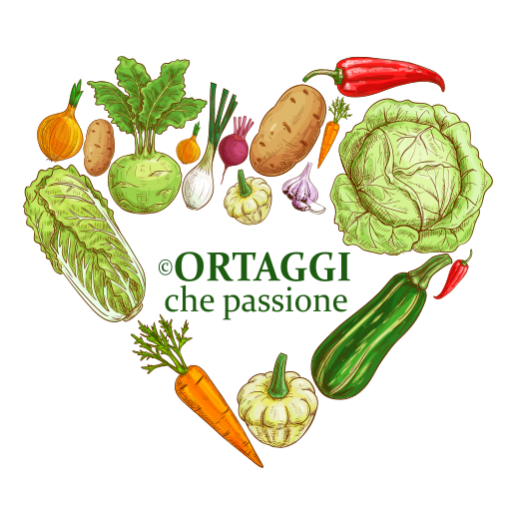Wild garlic (Allium ursinum) is a wild plant with an intense aroma, which grows in shady and humid woods, often hidden under a carpet of leaves. Its aroma resembles that of traditional garlic but with a more delicate and almost herbal note, capable of transforming every dish into something special without ever being overpowering. A completely edible and non-toxic spring herb, a highly appreciated gourmet ingredient.
SEASON of wild or woodland #garlic: from March to May, the season changes based on the climate and altitude (can vary from 0 to 4921 ft.) of the collection area.
It’s best to pick young, tender leaves before the flower blooms: larger ones are more fibrous but still edible.
Wild garlic collection may be subject to local regulations or natural park rules. It is always advisable to check beforehand. In South Tyrol, for example, it is prohibited in protected areas and limited elsewhere. In the Regional Park of the Euganean Hills (Veneto), there is a specific regulation for collecting edible wild flora.
Watch the video below on how to collect it.
RECIPES with wild spring herbs:
- Cuisine: Healthy
- Seasonality: Spring
- Energy 1.49 (Kcal)
- Carbohydrates 0.33 (g) of which sugars 0.01 (g)
- Proteins 0.06 (g)
- Fat 0.01 (g) of which saturated 0.00 (g)of which unsaturated 0.00 (g)
- Fibers 0.02 (g)
- Sodium 0.17 (mg)
Indicative values for a portion of 10 g processed in an automated way starting from the nutritional information available on the CREA* and FoodData Central** databases. It is not food and / or nutritional advice.
* CREATES Food and Nutrition Research Center: https://www.crea.gov.it/alimenti-e-nutrizione https://www.alimentinutrizione.it ** U.S. Department of Agriculture, Agricultural Research Service. FoodData Central, 2019. https://fdc.nal.usda.gov
Wild Garlic
- 0.35 oz wild garlic
Where to buy it?
You can easily find ready-to-use dried leaves, but if you prefer to grow it at home, you also have the option to buy seeds or bulbs and plant them directly in your garden.
🍀🍀🍀🍀
Below are the nutritional values for 10 grams of wild garlic.
RECIPES
How to use wild garlic? Good in pieces on pizza, in focaccia, savory pies, or in plumcake. In fresh pasta dough, bread, or taralli. For an extra touch, also add to mixed salads, in pan-cooked vegetables, omelets, fermented foods, or as a seasoning for grilled vegetables. Also try fried wild garlic leaves.
Ingredients
Ricotta (or spreadable cheese), woodland garlic leaves, oil, milk, and salt (optional)
Procedure
Wash and finely chop the wild garlic. Mash the ricotta with a fork, add the wild garlic, oil, and salt. Add a little milk if necessary to make the mixture homogeneous.
Alternatively, blend everything with a chopper to obtain a creamy green sauce.How to use it
Sauce to spread on crostini, to dress pasta, accompany vegetables, or enrich sandwiches and flatbreads.Ingredients
Butter, fresh wild garlic leaves, salt (optional)
Procedure
Leave the butter at room temperature to soften. Wash and finely chop the wild garlic leaves. Mix the butter with the chopped wild garlic, add salt to taste.Wrap the wild garlic butter in a sheet of plastic wrap or parchment paper, shaping it into a roll. Place the butter in the refrigerator for at least an hour to firm up.
How to use it
Perfect for accompanying toasted bread, grilled vegetables, baked potatoes, or even for giving a special touch to first courses. You can also use it to flavor grilled meat or fish!Ingredients
Rice, woodland garlic, onion, vegetable broth, extra virgin oil, white wine (optional), butter and/or cheese for creaming
Procedure
Chop the onion and wild garlic. Sauté the onion in oil, add the rice, and toast. Deglaze with white wine, then add the broth little by little. At the end of cooking, add the wild garlic. Once ready, turn off the heat and cream.Spring variant
Add asparagus tips or blanched fresh peas towards the end of cooking.
For a crunchy touch, add slivered almonds, hazelnut (or walnut) granules, or pumpkin seeds on top.
FAQ (Frequently Asked Questions)
What are the properties of wild garlic?
Nutritionist Trevisan says: “Wild garlic has all the properties of cultivated garlic in higher concentrations. It has a strong antibiotic and antifungal action, naturally lowers bad cholesterol levels in the blood, is useful in case of diarrhea and intestinal worms, lowers blood pressure and stimulates blood circulation, clears respiratory tracts of phlegm, and lowers fever.”
Does wild garlic cause bad breath?
Allium ursinum has a more delicate taste compared to common garlic and, for this reason, does not cause bad breath markedly. When eaten raw in large quantities, it may leave a slight odor, but it is much milder and more digestible.
How to recognize wild garlic?
It has green, smooth, and lanceolate leaves, with an intense garlic aroma that is clearly released when rubbing them between the fingers: this is the most reliable sign to recognize it. The leaves grow individually from the ground, each with a distinct thin stem. The upper side is shiny and glossy, while the underside is slightly dull.
Be careful not to confuse it with poisonous plants like lily of the valley or crocus: both have no smell, their leaves are shiny on both sides, and in the case of crocus, they sprout directly from the bulb, without any stem.Where does wild garlic grow?
It grows spontaneously in humid and shady environments like woods, hedges, and along stream edges. It is quite common in deciduous forests, especially in spring, before the trees fill with leaves.
Why is it called “bear’s garlic”?
The name “bear’s garlic” comes from the tradition that tells how bears, upon waking from hibernation, are attracted to its fresh leaves. These plants, rich in energy and purifying properties, offer animals a first nourishment to reinvigorate themselves.
Is wild garlic poisonous?
No, it is not poisonous, but it can be confused with toxic plants like lily of the valley or crocus. It’s better to collect it only if you are sure you can recognize it.

